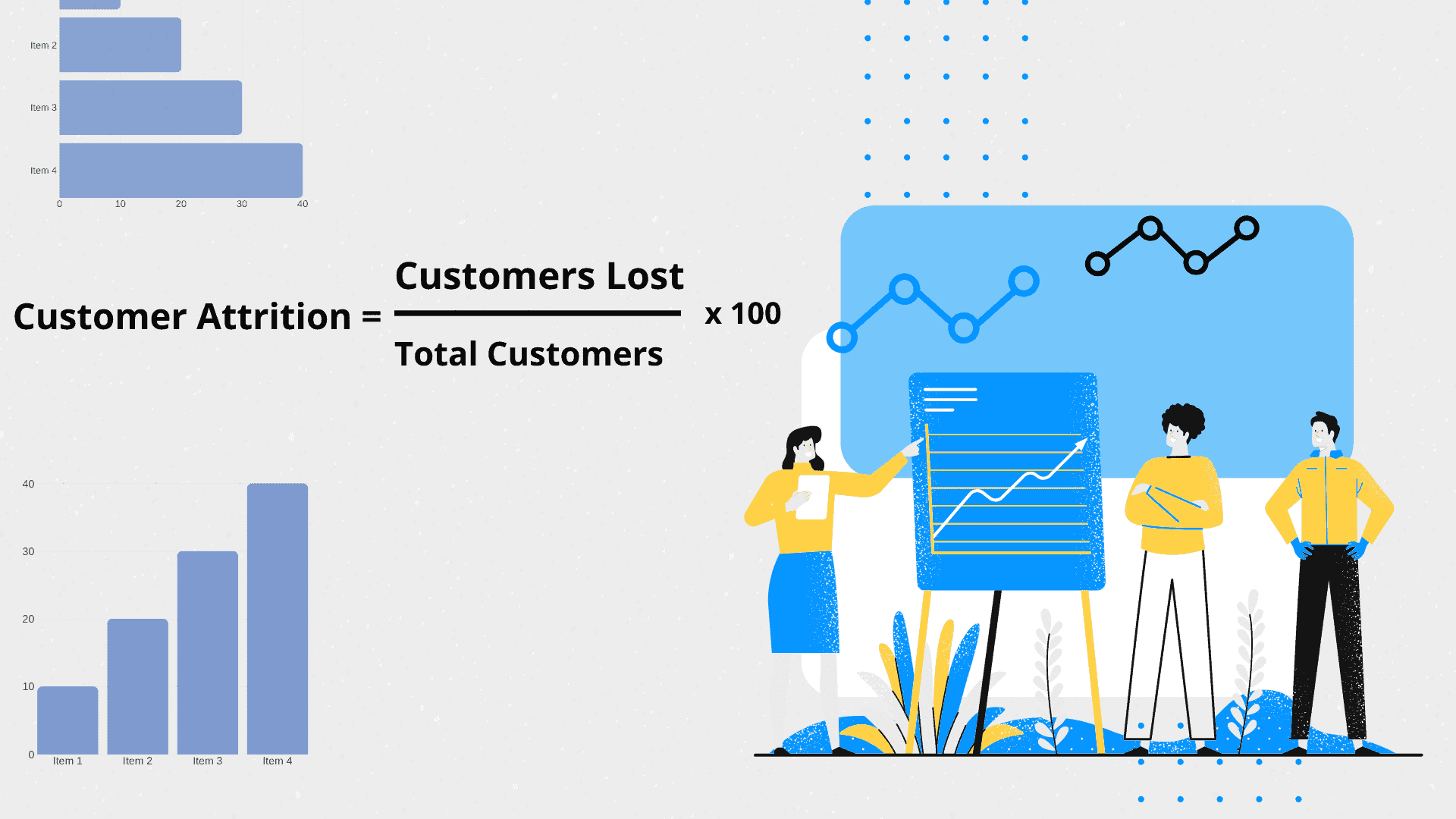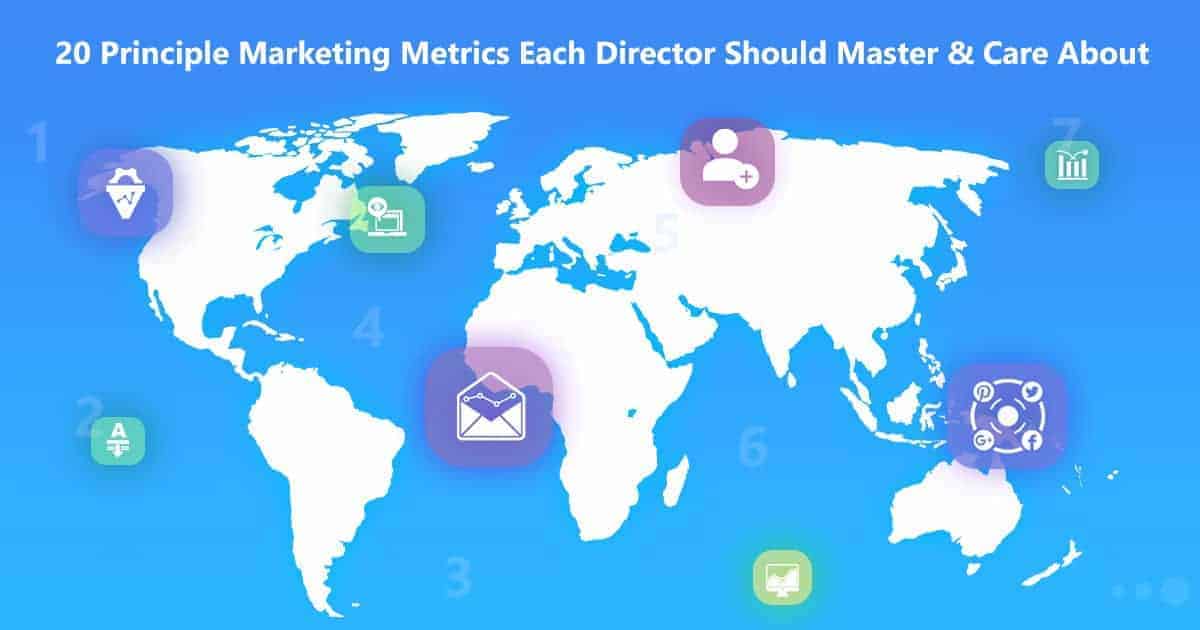Creating an original and attractive website is a task that any website owner strives for. But this is just not enough for having a successful website. That’s just half of the way to the success of a website.
Another important aspect to care about is the measuring of the effectiveness of the website with its content overall. This is called “marketing metrics” – the metrics via which you detect the effectiveness of your website. There are basic KPIs every website owner should follow to get the maximum results for the website and provide good rates in every aspect.
But what actually are marketing metrics and KPIs (Key Performance Indicators)? These are measurable values that are used by marketing services or teams to display the effectiveness of the campaigns’ overall marketing channels.
No matter if you intend to track the digital marketing performance of your website, SEO progress, or the general social-media growth, having KPIs set up can greatly push your business month-over-month.
Below are some marketing metrics and KPI examples to track your marketing goals.
1. Conversion rate
The conversion rate shows the results of the engagement of CTA buttons on your site. How many users have engaged with the call to action buttons on your website. It’s the number of conversions divided by the total number of visitors. The main purpose of CTA is to make the visitors do the actions you need, on click, in this case. Visitors may convert to your customers via such CTAs, and this will indicate the conversion rate on your website. The higher the conversion rate is, the better your business is moving on.
2. Page views
To understand what page views are, we can simply refer to the Google Analytic’s statement: “A view of a page on your site that is being tracked by the Analytics tracking code.” In addition, you should know that when a customer visits more than one page, it’s counted as additional page views.
This is an indicator showing the effectiveness of your pages. Which page has the most visits, and which has the most conversions.
3. Time on page
Depending on how much time the visitors have spent on your pages, you can easily find the best pages on your site. If the visitor doesn’t spend much time on a page, this means it’s not interesting and engaging for them. Having detected the pages where the visitors have spent most of the time, you can work on your other pages with lower time visits and improve them for better quality.
4. Bounce rate
The bounce rate is one of the worst things that may happen to any website owner. This is the rate showing the number of visitors who immediately leave the first page they visit on your website as a new visitor. What can be worst than a visitor not spending a single minute on your site? There are various ways of decreasing bounce rates on a website. One of them is the usage of exit Intent popups. These are types of popups that open to the users the moment they try to leave and engage them with an enticing offer.
5. Content downloads
Content downloads is another KPI that indicates the usefulness and goodness of your content or the products you offer to your customers/readers. This is the number that shows your success in what you offer to your customers. Depending on the number, you will understand the quality of your content and work on its improvements to provide more downloads.
6. Customer attrition
Having loyal customers forever is a desirable thing for most of website owners. But this is something not possible in most cases. Sometimes customers leave, and you should know the exact metrics showing the number of such customers. So to calculate the Customer Attrition you should simply divide customers lost in a certain time period over your total number of customers, then multiple times one hundred.

7. Email marketing
Email marketing can bring many conversions to your website if it’s cleverly operated. The first and the best thing you need to run successful email marketing is the usage of Subscription popups. This is the easiest way to collect subscribers to your list in order to start the email marketing campaign. In addition, you can use Autoresponder for marketing automation and don’t spend much time getting back to your subscribers.
8. Email open rate
One of the indicators of successful email marketing is the open rates of the emails you send. Email open rate is one of the key marketing metrics, especially in email marketing, which is so popular nowadays. By tracking the number of emails that the users have opened, you will know the success and effectiveness of your campaigns.
9. Unsubscribe rate
There’s also another super important KPI that can improve your website conversion if followed up properly. It’s the unsubscribe rate of your email marketing. You may think of the unsubscribers in a really bad way. But these are users who are not interested in your content anymore. Think about improving your content and make it more engaging instead.
10. Social media
We all know how important social media is for any business marketing nowadays. People earn money on social marketing only, not taking much effort into expensive advertising. These KPIs are the ones that you earn by sharing videos or other content with the audience and getting a callback.
11. New followers
One of the key marketing metrics in social media is the number of new followers on your site. It’s a known fact that the more followers you have the more successful your business will be. There are various ways to have more followers, but still, the main factor is the interesting and original content you offer to your audience.
12. Traffic
One of the most effective ways of getting more traffic to your website is the usage of social media. You can easily use your social media accounts to drive more traffic to your website. Another thing is to keep the number of users that come to your site.
13. Keyword ranking
The keyword ranking marketing metric shows the number of search engine rankings for targeted keywords. It also analyzes the changes in that ranking in a specific period. This marketing metric shows the effectiveness of your website in Google. There are so many keyword rank checkers available that can help you improve these marketing metrics on your site.
14. Page speed
Page speed is one of the key metrics for any website. Slow loading is one of the most annoying things about any type of website. This is the factor that can easily push back site visitors. That’s why it’s important to keep the speed high, using various page speed checkers.
15. Satisfaction survey
User experience is the basis of any successful website. A website owner considering customers’ opinions is halfway to success. Satisfaction surveys are the most common means of collecting feedback about the service by the customers.
16. Monthly Recurring Revenue
Monthly recurring revenue metrics are other important marketing metrics for a website owner who strives to keep the sales growing.
Using Sales funnels and Purchase funnels can ease the process of calculating and comparing the revenue in order to improve them.
17. Number of Trial Signups
The number of trial signups is a KPI giving a clear understanding of the success of your website. Of course, the number of visits, and the number of subscribers are also important metrics, but the truth is that the number of signups is the indicator of a step forward.
18. CPA (Cost Per Action)
CPA is a simple formula measuring the amount a business has paid to gain a conversion. Cost per action is also used for defining a marketing strategy allowing advertisers to pay for certain actions. Such actions include making a purchase or filling out a form from potential consumers.
19. ROI (Return on Investment)
This is the marketing metric specifying the effectiveness and the value of the investment. The Return on marketing investment metrics displays the gain or the loss of your investment comparing and measuring the amount of return on investment with the investment costs.
20. Customer Retention Rate (CRR)
Customer Retention Rate marketing metrics show the number of your retained customers. In fact, gaining new customers will cost you more than getting back the old ones. This is why it’s so important to take good care of your old customers and encourage loyal customers in various ways.

